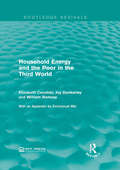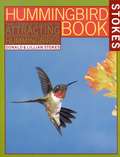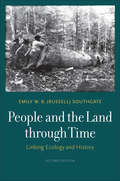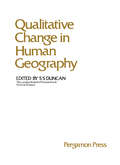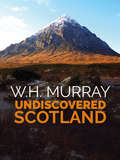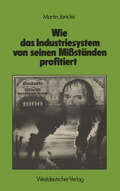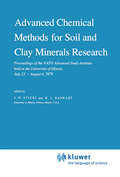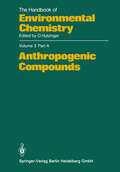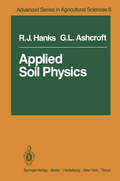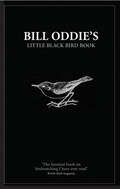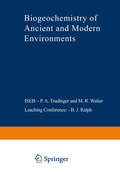- Table View
- List View
Horse Power and Magic
by George Ewart EvansThe pioneering oral historian, George Ewart Evans, began to record the farming ways of East Anglia in the 1950s by listening to old men and women whose memories went back more than fifty or sixty years. Many were agricultural labourers, born before the turn of the century, who had worked on farms before the arrival of mechanisation. It was assumed at that time that horses would soon disappear from the farms, and that this was the last chance of recording the part they had played for centuries. It later became clear that this forecast was too pessimistic and in Horse Power and Magic (Faber, 1979) Ewart Evans describes in fascinating detail some important farms where horses continued to be beneficially used more than thirty years later. He discovered that the traditions of the older horsemen had not died out but had been passed on, in only slightly attenuated form, to a younger generation keen to farm with horses, proving that the day of the heavy horse was by no means over. He also describes vividly the ways of horse-tamers whose skills had a touch of 'magic' about them.'Taking his works a whole, there is no doubt that George Ewart Evans will survive as a fascinating pioneer of the extra-academic recording of human history...he has found a dimension all his own. This is indeed the very stuff of history.' Sunday Times
Household Energy and the Poor in the Third World (Routledge Revivals)
by Elizabeth Cecelski Joy Dunkerley William RamsayThis volume originated as a report given to the World Bank in 1978 on the household energy consumption of both the urban and rural poor in developing countries. Originally published in 1979, this title supplies alternatives for meeting the domestic energy needs of the poor in developing countries and looks at the results of experiments in introducing new forms of energy. This book is a valuable resource for public policy makers and students interested in environmental studies and developmental studies.
Household Energy and the Poor in the Third World (Routledge Revivals)
by Elizabeth Cecelski Joy Dunkerley William RamsayThis volume originated as a report given to the World Bank in 1978 on the household energy consumption of both the urban and rural poor in developing countries. Originally published in 1979, this title supplies alternatives for meeting the domestic energy needs of the poor in developing countries and looks at the results of experiments in introducing new forms of energy. This book is a valuable resource for public policy makers and students interested in environmental studies and developmental studies.
The Hummingbird Book: The Complete Guide to Attracting, Identifying,and Enjoying Hummingbirds
by Donald Stokes Lillian StokesAttract amazing hummingbirds to your backyard! With this comprehensive, beautifully illustrated guide, you'll find it easy to attract these tiny jewel-like birds to your own yard. With this comprehensive, beautifully illustrated guide, you'll find it easy to attract these tiny, jewel-like birds to your own yard. The Stokes Hummingbird Book provides all the information you need to bring hummingbirds up close, identify them, and understand their fascinating and varied behavior. The book includes:Range maps and full-color photographs to help you identify and locate hummingbirdsInformation on how to select the proper feeders, what to use in them, when to put them up, and when to take them downAdvice on what flowers to plant to attract hummingbirds in your part of the countryAmazing facts about hummingbirds, such as how fast they fly and how much they weighGuidelines for photographing hummingbirdsComplete information on hummingbird behavior, including flight displays, breeding habits, and feedingA special section on attracting orioles, with photographs and behavior guides for each of the eight species found in North AmericaA resource list for hummingbird supplies
International Trade in Wildlife (Routledge Library Editions: Conservation #2)
by Tim Inskipp Sue WellsOriginally published in 1979 International Trade in Wildlife is a product of the 1973 Convention on International Trade in Endangered Species of Wild Fauna and Flora conference, containing the full text of the CITIES convention. The volume outlines the animals and plants controlled by CITIES, and describes the protective policies put in place to protect endangered plants and animals. It gives a detailed background to the international traffic in monkey’s, spotted cats, whales, ivory, parrots, tortoises, marine turtles, crocodiles, butterflies, sponges and rare orchids at the time of publication and acts as a comprehensive document on the conservation policies enacted through CITIES, as well as facts surrounding the decline of endangered species. Although published over 40 years ago, the document still offers a comprehensive and useful guide to conservation and will be an important historical document for environmental policy makers and conservationists alike.
International Trade in Wildlife (Routledge Library Editions: Conservation #2)
by Tim Inskipp Sue WellsOriginally published in 1979 International Trade in Wildlife is a product of the 1973 Convention on International Trade in Endangered Species of Wild Fauna and Flora conference, containing the full text of the CITIES convention. The volume outlines the animals and plants controlled by CITIES, and describes the protective policies put in place to protect endangered plants and animals. It gives a detailed background to the international traffic in monkey’s, spotted cats, whales, ivory, parrots, tortoises, marine turtles, crocodiles, butterflies, sponges and rare orchids at the time of publication and acts as a comprehensive document on the conservation policies enacted through CITIES, as well as facts surrounding the decline of endangered species. Although published over 40 years ago, the document still offers a comprehensive and useful guide to conservation and will be an important historical document for environmental policy makers and conservationists alike.
The Management of Schistosomiasis (Routledge Revivals)
by Patricia L. RosenfieldOne of the major considerations of any environmental resource project must be the effect on human well-being; originally published in 1979, this study aims to deal specifically with the transmission of Schistosomiasis as a human environmental impact. Due to its relationship with water, Schistosomiasis transmission areas can be spread or aggravated by new water resource projects particularly in developing countries, which could potentially lead to an epidemic situation. Rosenfield aims to demonstrate how prevention ideas can be conceived early on in the design process by exploring methodologies for predicting the prevalence of Schistosomiasis in certain areas and management strategies for controlling transmission. This title will be of interest to students of Environmental Studies and professionals.
The Management of Schistosomiasis (Routledge Revivals)
by Patricia L. RosenfieldOne of the major considerations of any environmental resource project must be the effect on human well-being; originally published in 1979, this study aims to deal specifically with the transmission of Schistosomiasis as a human environmental impact. Due to its relationship with water, Schistosomiasis transmission areas can be spread or aggravated by new water resource projects particularly in developing countries, which could potentially lead to an epidemic situation. Rosenfield aims to demonstrate how prevention ideas can be conceived early on in the design process by exploring methodologies for predicting the prevalence of Schistosomiasis in certain areas and management strategies for controlling transmission. This title will be of interest to students of Environmental Studies and professionals.
Mountaineering in Scotland: The first of W.H. Murray's great classics of mountain literature
by W.H. MurrayIn Mountaineering in Scotland, climber and mountaineer W.H. Murray vividly describes some of the most sought-after and classic British climbs on rock and ice, including the Cuillin Ridge on Skye and Ben Nevis.The book – written in secret on toilet paper in whilst Murray was a prisoner of war – is infused with the sense of freedom and joy the author found in the mountains. He details the hardship and pleasure wrung from high camping in winter, climbs Clachaig Gully and makes the second winter ascent of Observatory Ridge. Murray recounts his adventures in Glencoe and the mountains beyond – including a terrifying near-death experience at the falls of Falloch.Murray’s first book, Mountaineering in Scotland is widely acknowledged as a classic of mountaineering literature. It inspirational prose – as fresh now as when first published – is bound to make a reader reach for their tent and head for the hills of Scotland. He asserts, ‘Seeming danger ensures that on mountains, more than elsewhere, life may be lived at the full.’This is classic mountain climbing literature at its best.
Ovarian Follicular and Corpus Luteum Function (Advances in Experimental Medicine and Biology #112)
by C. P. ChanningPeople and the Land through Time: Linking Ecology and History, Second Edition
by Emily W. SouthgateA revised and updated edition of a classic book that defines the field of historical ecologyPeople and the Land through Time, first published in 1997, remains the only introduction to the field of historical ecology from the perspective of ecology and ecosystem processes. Widely praised for its emphasis on the integration of historical information into scientific analyses, it will be useful to an interdisciplinary audience of students and professionals in ecology, conservation, history, archaeology, geography, and anthropology. This up-to-date second edition addresses current issues in historical ecology such as the proposed geological epoch, the Anthropocene; historical species dispersal and extinction; the impacts of past climatic fluctuations; and trends in sustainability and conservation.
Pesticides: Contemporary Roles in Agriculture, Health, and Environment (Contemporary Issues in Science and Society)
by T. J. Sheets David PimentelChemical pesticides continue as a point of major controversy in our society. Increasingly stringent regulatory actions on the part of state and federal agencies, exemplified by the RPAR (Rebuttable Presump tion Against Registration) program of the Environmental Protection Agency, are supported by environmental groups and are generally op posed or viewed with skepticism by agriculturalists. The energy crisis invokes other questions on benefits of pesticides versus nonchemical controls and effects on labor utilization. As DDT and other persistent pesticides have been phased out, the more labile, short-lived chemicals have filled the voids in pest management systems; and effects on nontarget species appear to have declined in recent years as the shift occurred. However, nagging ques tions of the hazard to man and other nontarget species from long-term, low-level exposure to pesticides are frequently raised; and recent suggestions that certain well-known and long-used chemicals cause cancer, increase sterility, and initiate or augment other deleterious effects in test animals have instilled a sense of caution and raised con cern about the continued availability of some pesticides previously considered safe. So the facade of concern and confusion continues. This book is an outgrowth of a symposium at the meeting of the American Association for the Advancement of Science in February, 1978. An introduction has been added, and some of the papers have been modified since presentation.
Physiological Ecology of the Alpine Timberline: Tree Existence at High Altitudes with Special Reference to the European Alps (Ecological Studies #31)
by W. TranquilliniIn the European Alps the importance of forests as protection against ava lanches and soil erosion is becoming ever clearer with the continuing increase in population and development of tourism. The protective potential of the moun tain forests can currently only be partially realised because a considerable propor tion of high-altitude stands has been destroyed in historical times by man's extensive clearing ofthe forests. The forests still remaining are of limited effec tiveness, due to inadequate density of trees and over-maturity. Considerable efforts, however, are now being made in the Alps and other mountains of the globe to increase the high-altitude forested area through reforestation, to raise depressed timberlines, and to restore remaining protection forests using suit able silvicultural methods to their full protective value. This momentous task, if it is to be successful, must be planned on a sound foundation. An important prerequisite is the assembly of scientific facts con cerning the physical environment in the protection forest zone of mountains, and the course of various life processes of tree species occurring there. Since the introduction of practical field techniques it has been possible to investigate successfully the reaction of trees at various altitudes to recorded factors, and the extent to which they are adapted to the measured situations. Such ecophysio logical studies enable us to recognize the site requirements for individual tree species, and the reasons for the limits of their natural distribution.
The Picnic and Suchlike Pandemonium
by Gerald DurrellIf you loved My Family and Other Animals and can’t get enough of the Durrells after the Corfu series, this is the book for you. It constitutes a series of anecdotal snippets and short stories including ‘The Picnic’, a laugh-out-loud account of an ill-fated Durrell family excursion, which should have been a relaxing, jolly affair. But with the Durrells things are seldom straightforward and on this occasion all that could go wrong did go wrong - except Gerald Durrell's sense of humour in recounting the tale. Other hilarious and surreal Roald Dahlesque stories ensue, including the critically acclaimed Gothic horror story ‘The Entrance’.
Qualitative Change in Human Geography
by S. S. DuncanQualitative Change in Human Geography is a collection of studies that tackles concerns about human geography. The papers presented in the book deal with qualitative issues regarding human geography. The text contains eight different discussions that cover topics such as the direction of social practice research and the concept of people, society, and nature in social science. The book covers how economic and political interaction can explain the creation of spatial structure. The text discusses the explanatory theories and ideologies regarding the obsession of policymakers with the inner-city. The book will be of great interest to sociologists, psychologists, and individuals concerned with human geography.
Routledge Revivals: Wildlife Management in Savannah Woodland (Routledge Revivals)
by S. S. Ajayi L. B. HalsteadOriginally published in 1979, Wildlife Management in Savannah Woodland provides a multidisciplinary approach to the environment. Developed by local scientists with a deep knowledge and understanding of the local situation, the book provides a pragmatic and realistic approach to West African conditions.
Routledge Revivals: Wildlife Management in Savannah Woodland (Routledge Revivals)
by S.S. Ajayi and L.B. HalsteadOriginally published in 1979, Wildlife Management in Savannah Woodland provides a multidisciplinary approach to the environment. Developed by local scientists with a deep knowledge and understanding of the local situation, the book provides a pragmatic and realistic approach to West African conditions.
Steroid Hormone Receptor Systems (Advances in Experimental Medicine and Biology #117)
by W. W. LeavittThe papers in this volume were presented at the Symposium on Steroid Hormone Receptor Systems held October 18-20, 1978, at the Worcester Foundation for Experimental Biology, Shrewsbury, Mass. The meeting was organized to review, discuss, and disseminate new knowledge about the regulation and function of the receptor proteins which mediate estrogen, progestin, glucocorticoid, and androgen action. The symposium brought together leading scientists whose interests span the spectrum of biological organization. On this occasion, Drs. Elwood V. Jensen and Etienne E. Baulieu were honored as recipients of the Tenth Annual Gregory Pincus l1emorial Award for their pioneering studies of steroid hormone receptors. The material covered in this book focuses on the molecular mechanisms which control receptor site availability and function. The topics discussed include recent work on receptor antibodies, antiestrogen action, receptor heterogeneity, nuclear binding and processing of receptor, receptor activation and inactivation mechan isms, interactions between receptor systems, influence of biological rhythms, membrane binding sites, and the evolution of steroid-bind ing proteins. Although studies on steroid receptors have led to the development of new approaches for cancer therapy and contraception, much remains to be discovered in this rapidly expanding field. Hope fully, this book will provide added impetus to the quest for a full understanding of steroid receptor systems by drawing attention to the unresolved questions yet to be answered. Hhile the book is intended primarily for those interested in hormone action, it should be of value to a more general audience including cell, molecular, and developmental biologists.
Undiscovered Scotland: The second of W.H. Murray's great classics of mountain literature
by W.H. MurrayIn Mountaineering in Scotland, climber and mountaineer W.H. Murray vividly describes some of the most sought-after and classic British climbs on rock and ice, including the Cuillin Ridge on Skye and Ben Nevis. The book – written in secret on toilet paper in whilst Murray was a prisoner of war – is infused with the sense of freedom and joy the author found in the mountains. He details the hardship and pleasure wrung from high camping in winter, climbs Clachaig Gully and makes the second winter ascent of Observatory Ridge. Murray recounts his adventures in Glencoe and the mountains beyond – including a terrifying near-death experience at the falls of Falloch. Murray’s first book, Mountaineering in Scotland is widely acknowledged as a classic of mountaineering literature. It inspirational prose – as fresh now as when first published – is bound to make a reader reach for their tent and head for the hills of Scotland. He asserts, ‘Seeming danger ensures that on mountains, more than elsewhere, life may be lived at the full.’ This is classic mountain climbing literature at its best.
Wie das Industriesystem von seinen Mißständen profitiert: Kosten und Nutzen technokratischer Symptombekämpfung: Umweltschutz, Gesundheitswesen, innere Sicherheit
by Martin JänickeAdvanced Chemical Methods for Soil and Clay Minerals Research: Proceedings of the NATO Advanced Study Institute held at the University of Illinois, July 23 – August 4, 1979 (Nato Science Series C: #63)
by J. W. Stucki W. L. BanwartDuring the past few years there has been a marked increase in the use of advanced chemical methods in studies of soil and clay mineral systems, but only a relatively small number of soil and clay scientists have become intimately associ ated and acquainted with these new techniques. Perhaps the most important obstacles to technology transfer in this area are: 1) many soil and clay chemists have had insufficient opportunities to explore in depth the working principles of more recent spectroscopic developments, and therefore are unable to exploit the vast wealth of information that is available through the application of such ad vanced technology to soil chemical research; and 2) the necessary equipment gen erally is unavailable unless collaborative projects are undertaken with chemists and physicists who already have the instruments. The objective of the NATO Advanced Study Institute held at the University of Illinois from July 23 to August 4, 1979, was to partially alleviate these obstacles. This volume, which is an extensively edited and reviewed version of the proceedings of that Advanced Study Institute, is an essential aspect of that purpose. Herein are summarized the theory and most current applications of six different spectroscopic methods to soil and/or clay mineral systems. The instrumental methods examined are Mossbauer, neutron scattering, x-ray photoelectron (XPS, ESCA), nuclear magnetic resonance (NMR), electron spin resonance (ESR, EPR), and photoacoustic spectroscopy. Contributing authors were also lecturers at the Advanced Study Institute, and are each well known and respected authorities in their respective disciplines.
Anthropogenic Compounds (The Handbook of Environmental Chemistry #3 / 3A)
by Rudolf Anliker G. C. Butler E. A. Clarke U. Förstner W. Funke C. Hyslop G. Kaiser C. Rappe J. Russow G. Tölg M. Zander V. ZitkoEnvironmental Chemistry is a relatively young science. Interestin this subject, however, is growing very rapidly and, although no agreement has been reached as yet about the exact content and Iimits of this interdisciplinary discipline, there appears to be increasing interest in seeing environmental topics which are based on chemistry embodied in this subject. One of the first objectives ofEnvironmental Chemistry must be the study ofthe environment and of natural chemical processes which occur in the environment. A major purpose of this series on Environmental Chemistry, therefore, is to present a reasonably uniform view of various aspects of the chemistry of the environ ment and chemical reactions occurring in the environment. The industrial activities of man have given a new dimension to Environ mental Chemistry. Wehave now synthesized and described over five million chemical compounds and chemical industry produces about hundred and fifty million tons of synthetic chemieals annually. We ship billions of tons of oil per year and through mining operations and other geophysical modifications, large quantities of inorganic and organic materials are released from their natural deposits. Cities and metropolitan areas ofup to 15 million inhabitants produce large quantities ofwaste in relatively small and confined areas. Much of the chemical products and waste products of modern society are released into the environment either during production, storage, transport, use or ultimate disposal. These released materials participate in natural cycles and reactions and frequently Iead to interference and disturbance of natural systems.
Applied Soil Physics: Soil Water and Temperature Applications (Advanced Series in Agricultural Sciences #8)
by R. J. Hanks G. L. AshcroftBill Oddie's Little Black Bird Book
by Bill Oddie'Bird-watchers are tense, competitive, selfish, shifty, dishonest, distrusting, boorish, pedantic, unsentimental, arrogant and – above all – envious'. So says Bill Oddie, and he should know!
Biogeochemistry of Ancient and Modern Environments: Proceedings of the Fourth International Symposium on Environmental Biogeochemistry (ISEB) and, Conference on Biogeochemistry in Relation to the Mining Industry and Environmental Pollution (Leaching Conference), held in Canberra, Australia, 26 August – 4 September 1979
by P. A. Trudinger M. R. Walter B. J. RalphThis volume contains a selection of papers presented to the Fourth International Symposium on Environmental Biogeochemistry (ISEB), and a conference on Biogeochemistry in Relation to Mining Industry and Environmental Pollution (Leaching Conferenc~, held in Canberra, Aust ralia on August 26-31 and September 3-4, 1979, respectively. The ISEB were established to provide "a forum for uninhibited exchange of information and ideas among the biological, chemical, atmospheric and geolopical scientists working in the common area of biogeochemistry, encompassing soil and other earth sciences as weIL as the hydrosphere and atmosphere", By linking the fourth ISEB with the Leachinp Conference the scop.e of discussions was extended to encompass the application of biogeochemical processes to the mining industry. This wide-ranging philosophy is reflected in the breadth and diversity of the subjects covered in this book. The published papers are expanded versions of those presented at the meetings. They have all been scrutinized by at least one referee in addition to the editors. About 20% of the contributions to the meetings are not included, either because authors did not wish to publish or because the papers were not accepted by the editors.

